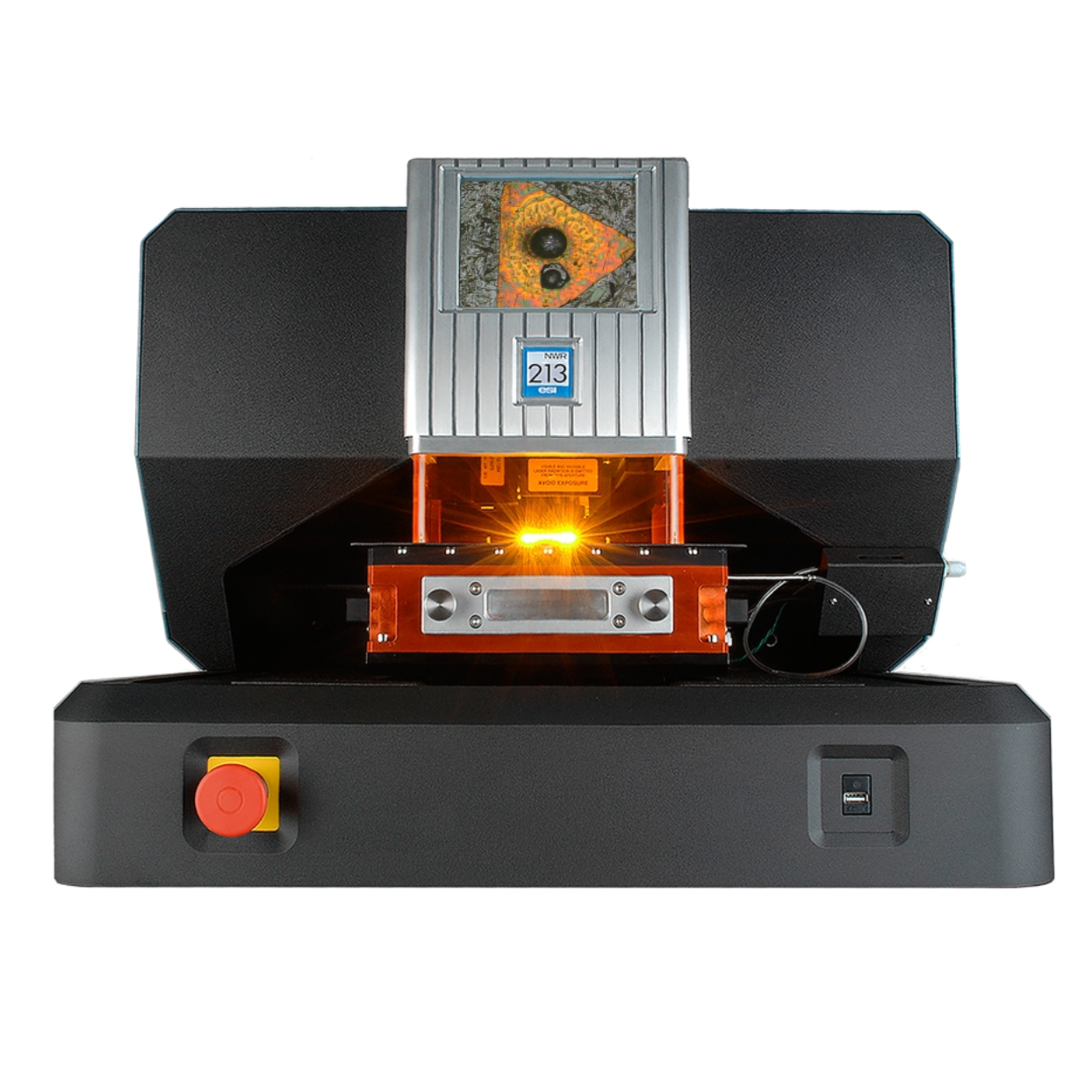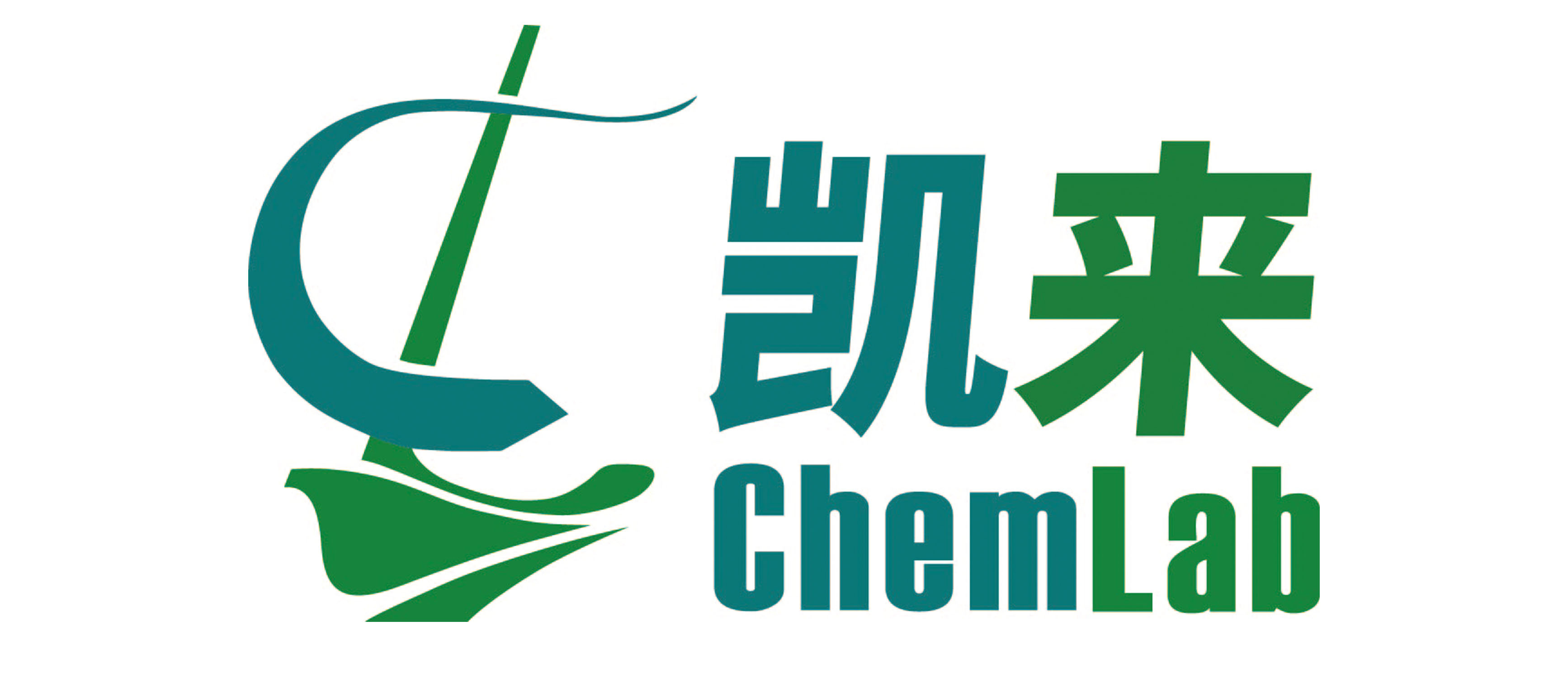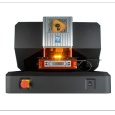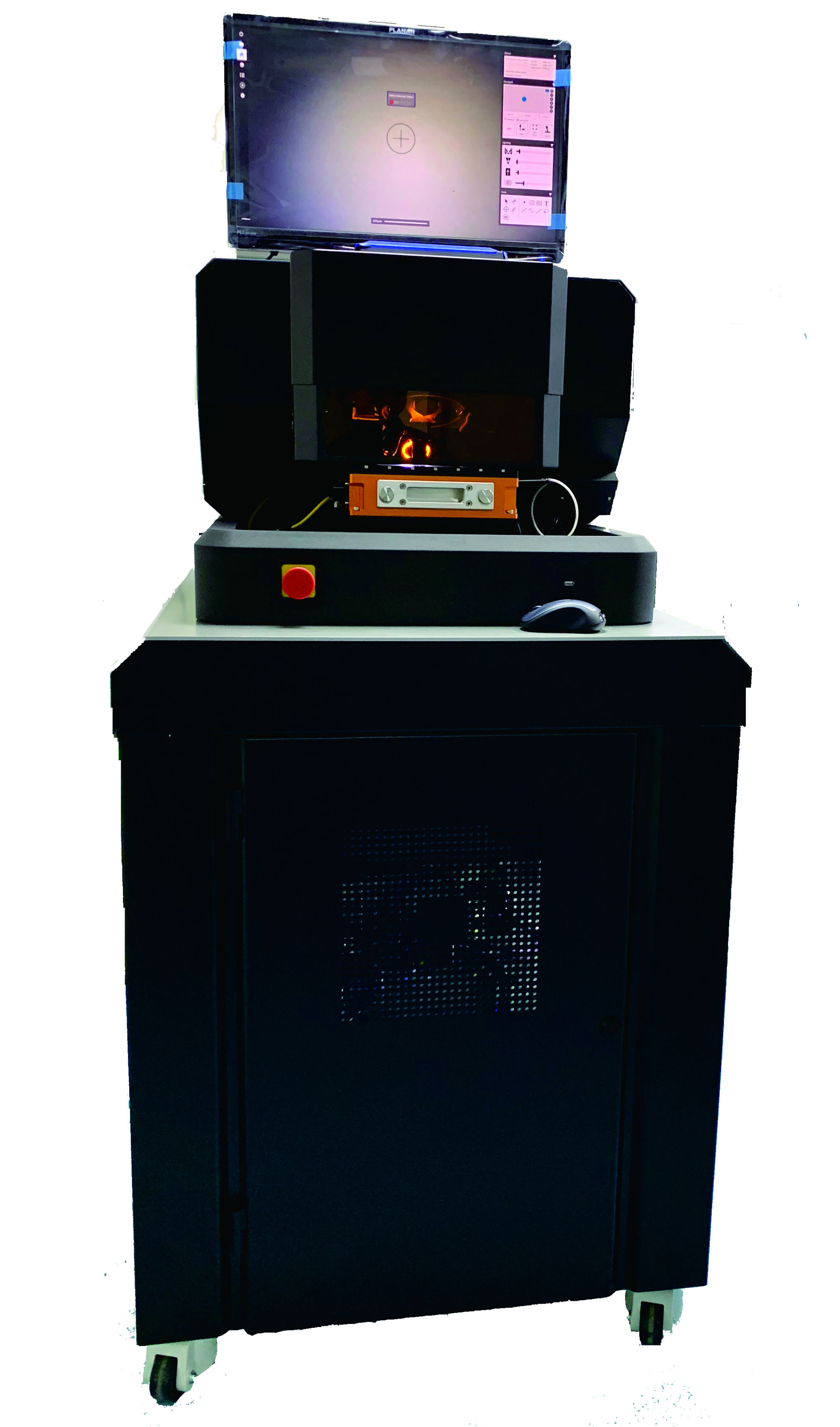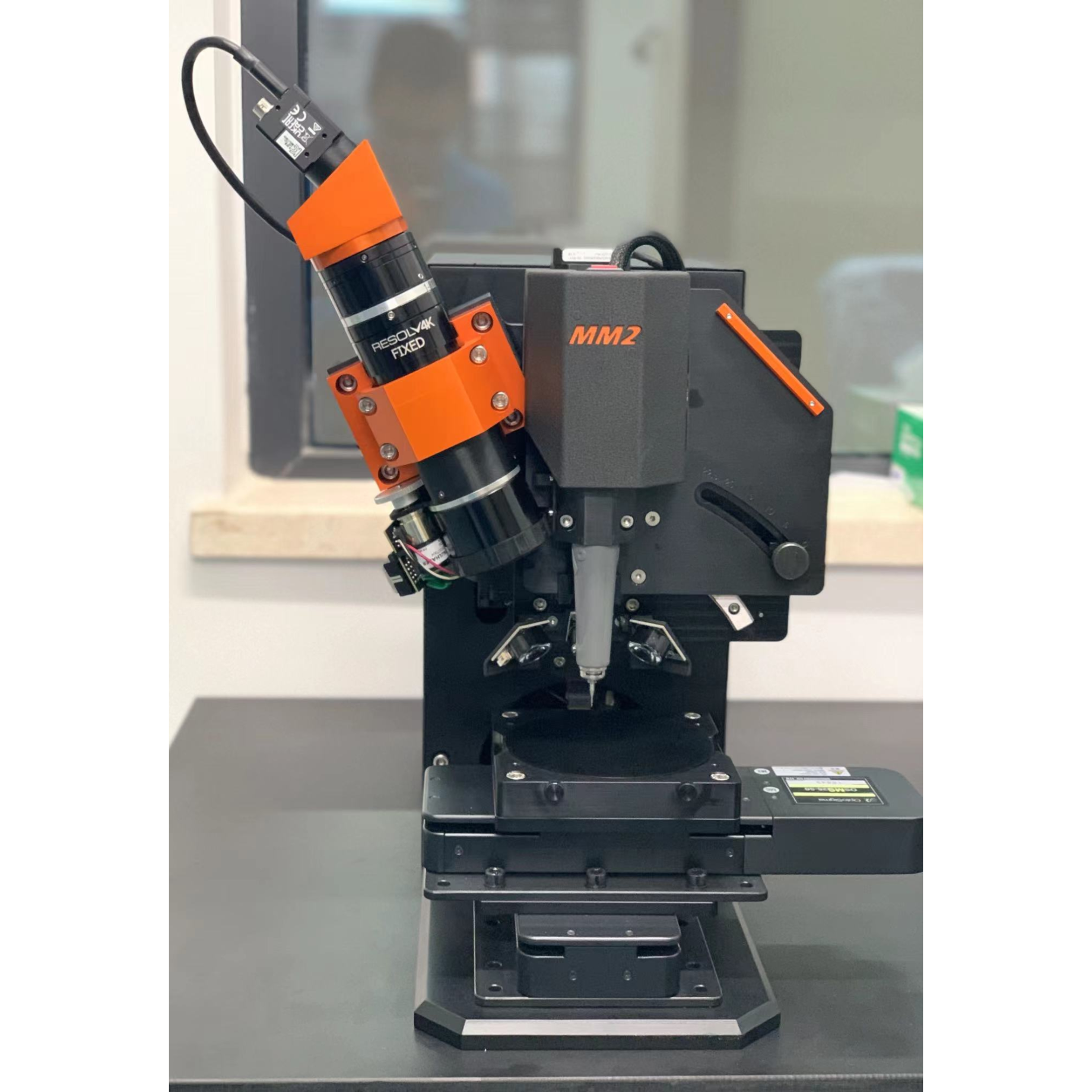方案详情
文
铂族金属(PGM)的全球需求自从催化转换器作为汽车的标准部件以来急剧增加,同时它们的使用也扩大到高质量玻璃的生产、炼油和高规格电子元件的制造。此外,铂、金和银在珠宝、饰品和手表等方面的装饰价值,或仅仅是作为一种潜在的金融投资,都有很高的需求。医疗行业还使用铂族金属,机械用于生产医疗器械,或医学用于铂基化疗药物。铂催化剂在燃料电池中的应用是一种极具发展潜力的应用,它可以促进氢和氧的反应,从而产生电能。纯铂族金属的高成本是由于在相应的矿石含量低(≤10μg / g)和漫长的过程,包括所需的许多物理和化学疗法获得纯金属。当前高对贵金属的需求是他们的众多应用程序及其罕见的结果自然出现,这导致了这些金属回收的必要性从范围广泛的工业中间材料和废料从电子或催化应用,如在汽车排气催化剂。利用铅火焰法从可回收材料中回收铂基复合材料和贵金属,将贵金属高温提取到熔融铅中。传统的分析是通过湿化学和溶液ICP - MS来完成的,然而,这一过程是费力的,并且涉及到危险酸的高温使用。另一种方法是弧/火花所应承担的,虽然灵敏度是不够的对于某些应用程序,这研究探索的可能性使用LA ICP MS应承担应承担代替湿法化学和火花OES使用同位素稀释和单一标准添加/内部标准化(mono必经同位素元素)测定贵金属的按钮。
方案详情

NWR011 Introduction Global use of platinum group metals (PGM) has increased drastically since the introduction of catalytic converters asa standard component in motor vehicles, while their use has also expanded into production of high quality glasses,oil refining and the manufacture of high-specification electronic components. In addition Pt, Au and Ag are highly indemand for their decorative value in jewelry, ornaments and watches or simply for their potential as a financial in-vestment. The medical sector also employs platinum group metals,either mechanically for the production of medicaldevices or medicinally for Pt-based chemotherapeutic drugs. An application with huge potential for expansion is theuse of Pt catalysts in fuel cells facilitating the reaction of hydrogen and oxygen for the generation of electric power. The high cost of pure PGMs is attributed to their low content in their corresponding ores (<10 ug/g) and the longprocess, consisting of many physical and chemical treatments required to obtain the pure metals. The current highdemand for precious metals is a result of their numerous applications and their rare natural occurrence and this hasled to the necessity to recycle these metals from a wide range of industrial intermediate materials and scrap fromelectronic or catalytic applications, such as spent automotive exhaust catalysts. The recovery of PGM’s and preciousmetals from recyclable materials is performed by Pb fire assay, whereby the precious metals are extracted into mol-ten Pb at high temperatures. Analysis is traditionally achieved by wet chemistry and solution ICP-MS, however, thisprocess is laborious and involves the high-temperature use of dangerous acids. An alternative is Arc/Spark-OES, al-though sensitivity is not sufficient for some applications This study explores the possibility of using LA-ICP-MS as an alternative to wet chemistry and Spark-OES using a com-bination of isotope dilution and single standard addition/internal standardization (for the mono-isotopic elements)for the determination of precious metals in lead buttons. All analysis was performed using a UP193HE excimer laser ablation systemfrom ESI (New Wave Research division) connected to a Perkin Elmer ElanDRCPlus quadrupole ICP-MS running in reaction mode with 99.995% NHs gasin order to remove the potential doubly-charged ion interference of 206pb*on the 103Rh* mass. Key experimental parameters are listed in Table 1. Reference standards were prepared by adding standard reference solutionsto molten lead during the process of bead manufacture. Standards andsamples for an isotope dilution method were synthesized via the additionof isotopically-pure standard materials during the process. Greater homo-geneity of spiked elements in the beads was achieved using a series of in-ductive melting processes. Table 1. Operating parameters fordetermination of Rh, Pd, Ag, Pt and Au in fireassay Pb buttons. Laser Ablation Settings Beam Diameter 150 pm Laser Repetition Rate 20 Hz Laser Fluence 6J/cm Ablation Duration 30s He Cell Gas Flow Rate 0.6L/min ICP-MS Settings RF Power 1200 W Ar Nebuliser Gas Flow Rate 0.5 L/min NHs Reaction Gas Flow Rate 0.2 mL/min Dwell Time Per Mass 2 ms Masses Monitored 103Rh,105Pd,107Ag,108Pd,109Ag,194Pt,195Pt, 17Au,204Pt Pt, Pd and Ag were determined in four samples via the isotope dilution method (Au and Rh were excluded as theyare mono-isotopic). Pt and Ag were enriched in the lighter isotope, therefore, the number of moles of each analyteelement, nsample, is equal to: Where Rsampler Rspike and Rmix represent the measured isotope ratios in the sample button, the spike button and themixed button, nspike is the number of moles of the lighter isotope added, and nate is the natural isotope abundanceof that isotope. Pd was enriched in the heavier isotope, therefore: Aneysis of Po Fire-Assay Buttons By LA-ICP-MS An external calibration method using the matrix matched stan-dards was also applied. The standards covered a range from 0 to200 ug/g for each element, and signals were normalized to204Pb*. Results from the isotope dilution and external calibrationmethods are shown in Table 2 where a comparison can be madebetween the isotope dilution results and those obtained via ex-.ternal calibration. The isotope dilution results are more accuratethan the external calibration for every sample and for every ele-ment. The results obtained via isotope dilution were also shownto be more precise than those obtained via external calibration.Thus, it can be concluded that isotope dilution as a calibrationmethod results in highly accurate and precise results. Table 2. Reference concentrations, experimental valuesdetermined via isotope dilution and via external calibrationfor the determination of Pt, Pd and Ag in lead samples Experimental Result Reference Value Isotope Dilution n External Calibration Pt/ug/g Sample EM5 98.0±2.0 98.87±0.23 95.45±0.55 SampleKS3 9.60±0.20 9.93±0.10 10.16±0.57 Sample disk 6 30.00±0.60 30.80±0.58 27.05±0.54 Sample SARM 66 11.87±0.42 12.38±0.11 8.92±0.57 Pd/pg/g Sample EM5 99.0±2.0 98.35±0.19 95.2±1.9 SampleKS3 10.50±0.21 10.26±0.16 9.1±2.0 Sample disk 6 15.00±0.30 14.97±0.32 15.2±2.0 Sample SARM 66 6.34±0.58 6.33±0.12 7.0±2.0 Ag/ug/g Sample EM5 108.0±2.2 109.94±0.21 101.31±0.49 SampleKS3 52.9±1.1 54.49±0.16 50.57±0.33 As previously mentioned, Au and Rh are mono-isotopic ele-ments, and so cannot be determined using an isotope dilutionmethod, therefore a standard addition method was applied. Inthis methodology a spike is added to the sample during synthesisof the lead button. The concentration of Rh and Au in the sample(csample) is given by: Table 3. Reference concentrations and concentrations determined via singlestandard addition, internal standardization and external calibration for thedetermination of Au and Rh in lead samples Au/ug/g Sample EM5 105.0±2.1 88.2±2.3 94.3±5.2 90.20±0.54 SampleKS3 39.70±0.80 35.3±1.2 35.2±2.4 32.92±0.53 Sample disk 6 9.00±0.18 19.3±2.7 14.3±2.2 12.12±0.56 Sample SARM 66 0.070±0.003
确定
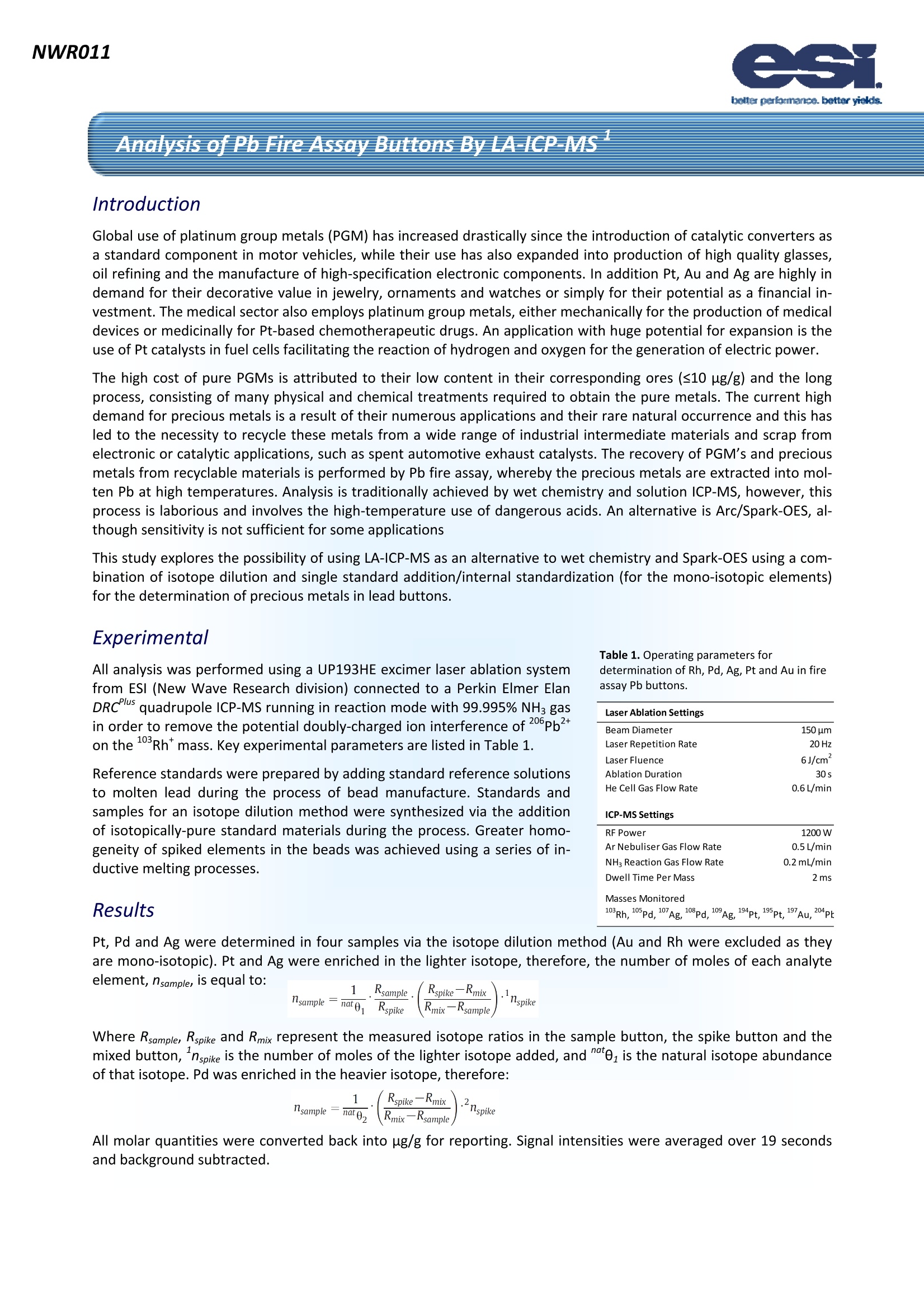
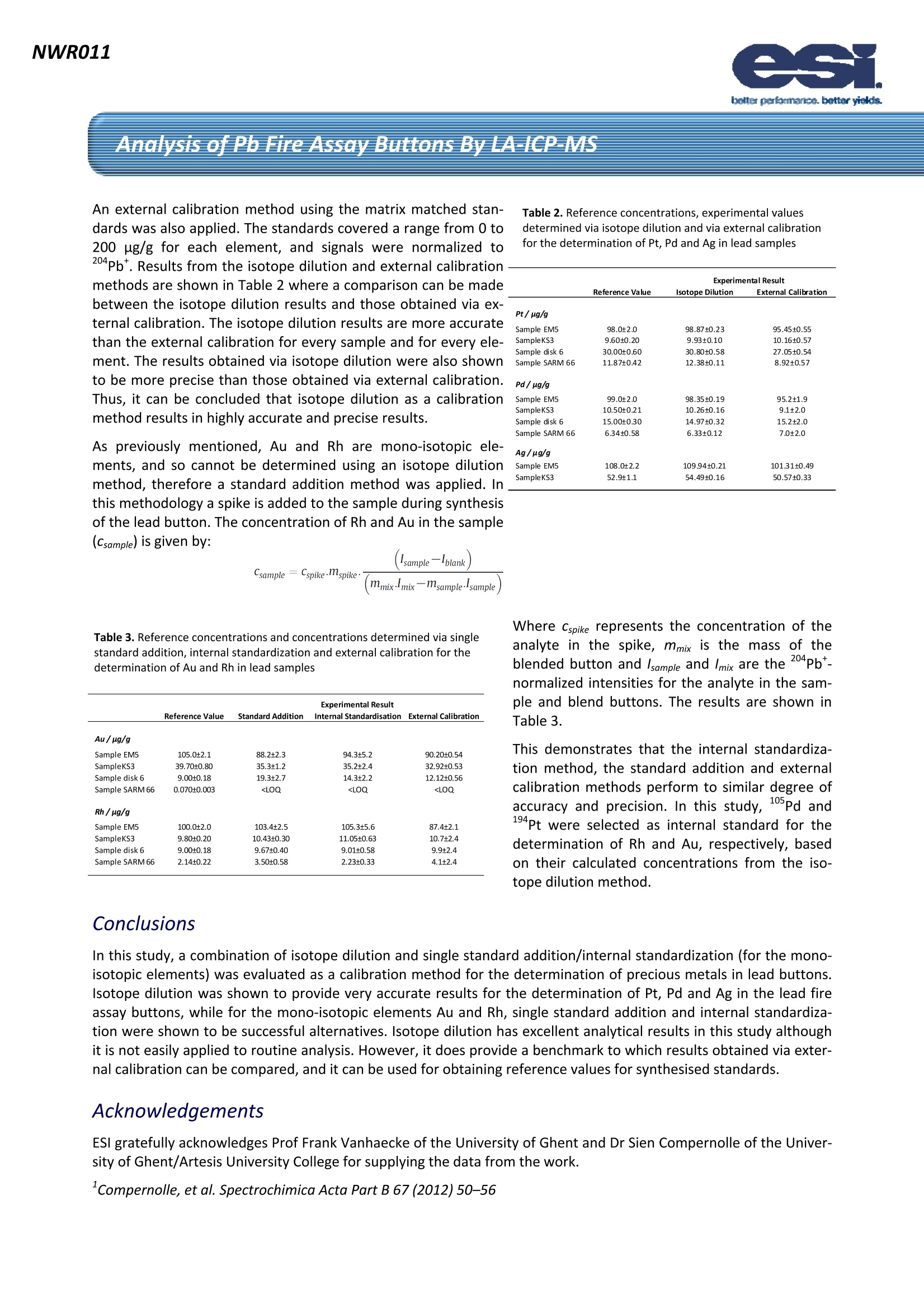
还剩1页未读,是否继续阅读?
上海凯来仪器有限公司为您提供《Pb中Pb燃烧试验按钮检测方案(激光剥蚀进样)》,该方案主要用于铅中可靠性能检测,参考标准--,《Pb中Pb燃烧试验按钮检测方案(激光剥蚀进样)》用到的仪器有ESL213 灵活的激光剥蚀系统
推荐专场

